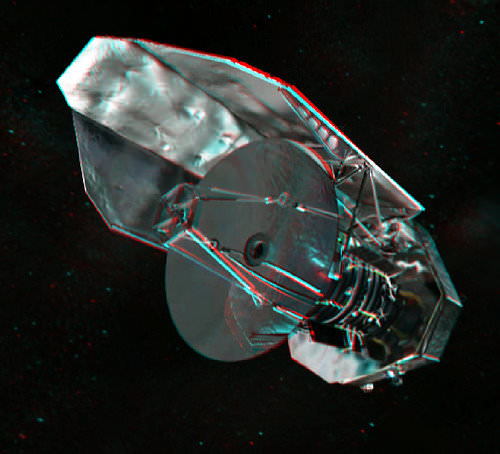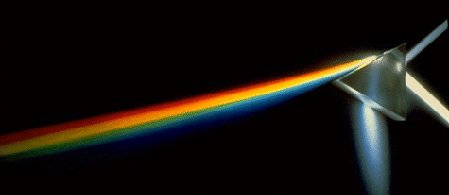Materials science has once again come through for space exploration. Researchers at the Laser Interferometer Gravitational-Wave Observatory (LIGO) have developed a coating that could increase the sensitivity of LIGO by almost an order of magnitude. That would increase the detection rate of the gravitational waves the observatory is seeking from about once a week to once a day, mainly due to the increased volume of space that the observatory’s interferometers would be able to collect signals from.
Continue reading “On its Next run, LIGO Will be Able to Probe 8 Times as Much Space”Parabolic Mirror
[/caption]
Sometimes, in astronomy, the name of a thing describes it well; a parabolic mirror is, indeed, a mirror which has the shape of a parabola (an example of a name that does not describe itself well? How about Mare Nectaris, “Sea of Nectar”!). Actually, it’s a circular paraboloid, the 3D shape you get by rotating a parabola (which is 2D) around its axis.
The main part of the standard astronomical reflecting telescope – the primary mirror – is a parabolic mirror. So too is the dish of most radio telescopes, from the Lovell telescope at Jodrell Bank, to the telescopes in the Very Large Array; note that the dish in the Arecibo Observatory is not a parabolic mirror (it’s a spherical one). Focusing x-ray telescopes, such as Chandra and XMM-Newton, also use nested parabolic mirrors … followed by nested hyperbolic mirrors.
Why a parabolic shape? Because mirrors of this shape reflect the light (UV, IR, microwaves, radio) from distant objects onto a point, the focus of the parabola. This was known in ancient Greece, but the first telescope to incorporate a parabolic mirror wasn’t made until 1673 (by Robert Hooke, based on a design by James Gregory; the reflecting telescope Newton built used a spherical mirror). Parabolic mirrors do not suffer from spherical aberration (spherical mirrors cannot focus all incoming, on-axis, light onto a point), nor chromatic aberration (single lens refracting telescopes focus light of different colors at different points), so are the best kind of primary mirror for a simple telescope (however, off-axis sources will suffer from coma).
The Metropolitan State College of Denver has a cool animation of how a parabolic mirror focuses a plane wave train onto a point (the focus).
Universe Today has many articles on the use of parabolic mirrors in telescopes; for example Kid’s Telescope, Cassegrain Telescope, Where Did the Modern Telescope Come From?, Nano-Engineered Liquid Mirror Telescopes, A Pristine View of the Universe … from the Moon, Largest Mirror in Space Under Development, and 8.4 Metre Mirror Installed on Huge Binoculars.
Telescopes, the Next Level is an excellent Astronomy Cast episode, containing material on parabolic mirrors.
Visible Light
[/caption]
Of all the wavelengths in the electromagnetic spectrum, those that lie between 400 nm to 700 nm are the ones most familiar to us. That’s because these are the waves that comprise what we call visible light.
When we see objects, it’s because they’re being illuminated by visible light. When we see that the sky is blue, or the grass is green, or hair black, or that an apple is red, that’s because we’re seeing different wavelengths within the 400nm-700nm band. Because of the waves in this band, a lot has been learned about the properties of electromagnetic waves.
Through visible light, reflection & refraction are easily observed. So are interference and diffraction. Mirrors, lenses, prisms, diffraction gratings, and spectrometers have all been put to use to understand and manifest the qualities of the light that we see through our naked eyes.
Galileo’s telescope, which was composed of a simple set of lenses, made use of the refractive properties of light to magnify distant objects. Today’s binoculars and periscopes capitalize on the optical phenomenon called Total Internal Reflection by using prisms to improve on what early refractive telescopes were capable of achieving.
As mentioned earlier, visible light is made up of the wavelengths that range from 400 nm to 700 nm. Each wavelength is characterized by a unique color, with violet on one end (adjacent to ultraviolet light) and red on the other (adjacent to infrared light). When all these wavelengths are combined together, they make up what is known as white light.
You can separate these wavelengths (and the corresponding colors) by letting them pass through either a prism or a diffraction grating. The magnificent array of colors that we see in a rainbow, on a diamond, or even a peacock’s tail are examples of this separation.
All phenomena of visible light such as reflection, refraction, interference, and diffraction are also exhibited by non-visible wavelengths. Hence, by understanding these phenomena, and applying them to the non-visible wavelengths, scientists were able to unearth many of nature’s secrets. In fact, if we trace back the roots of modern physics, particularly the wave-particle duality of matter, we will be led back to its manifestation in visible light.
The study of visible light falls under the realm of optics. Among the scientists who have contributed substantially to the development of optics are Christiaan Huygens for his wavelets and a wave theory of light, Isaac Newton for his contributions on reflection and refraction, James Clerk Maxwell for the propagation of electromagnetic waves as explained in a series of equations, and Heinrich Hertz for verifying the truth of those equations through experiments.
You can read more about visible light here in Universe Today. Want to know where visible light comes from? How about a visible light image of a distant galaxy?
There’s more about it at NASA and Physics World:
Visible Light Waves
The special effect of physics
Here are two episodes at Astronomy Cast that you might want to check out as well:
Optical Astronomy
Interferometry
Sources:
Windows to Universe
NASA: Visible Light
Wikipedia: Christiaan Huygens
NASA: Maxwell and Hertz



